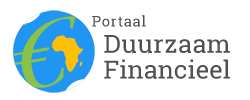UniCredit expects a record year for green bonds in 2018. According to the bank’s calculations, green bonds totaling USD 72 billion were placed worldwide in the first half of 2018 – an increase of 1.4 percent over the same period last year. For the second half of 2018, UniCredit expects over USD 93 billion of issuance worldwide – thus exceeding last year’s record value of USD 161 billion year by 2.5 percent at USD 165 billion.
Throughout the first half of the year, the green market was primarily dominated by European issuers with around 44 percent of deals. With respect to currencies, EUR-denominated green bonds had the biggest share at 41 percent. Financials were the largest issuer type at 20 percent, followed by corporates with 14 percent, sovereigns with 9 percent and supranationals with 8 percent of new issuance.
“There is a green demand by all means. Hardly any institutional asset manager can do without some form of ESG or SRI fund”, says Antonio Keglevich, Head of Sustainability Bond Origination at UniCredit. “As a result, green bonds are often more heavily oversubscribed than conventional bonds. This in turn allows issuers to benefit from lower new issue premiums.”
Alongside ‘classic’ green bonds, sovereign and covered green bonds have been gaining traction. The latter offer the same security as traditional covered bonds, while attracting a wider and more diversified investor base. In the first half of 2018, nine green or social covered bonds were issued with the amount outstanding climbing to EUR 8.5 billion.
This momentum is also reflected in social and sustainability bonds. While social bonds raise funds for projects with positive social objectives, sustainability bonds combine both green and social aspects. Social and sustainability bonds accounted for around 12 percent of all green, social and sustainability bonds issued in the first half of 2018.



